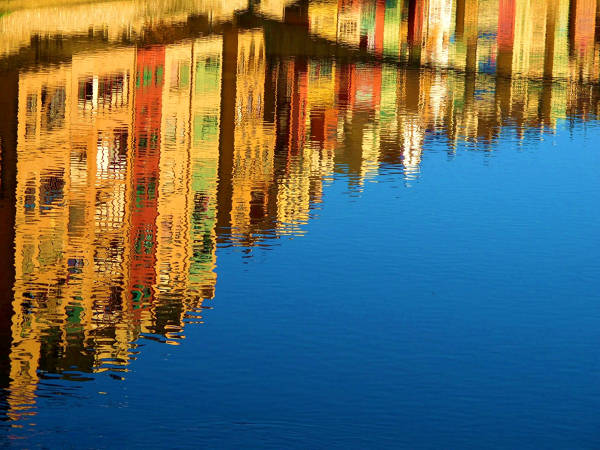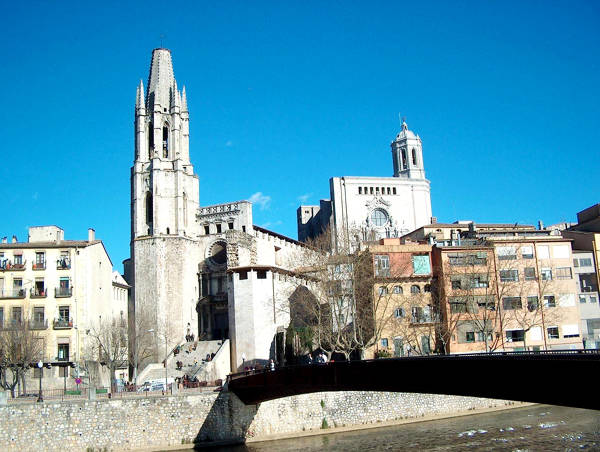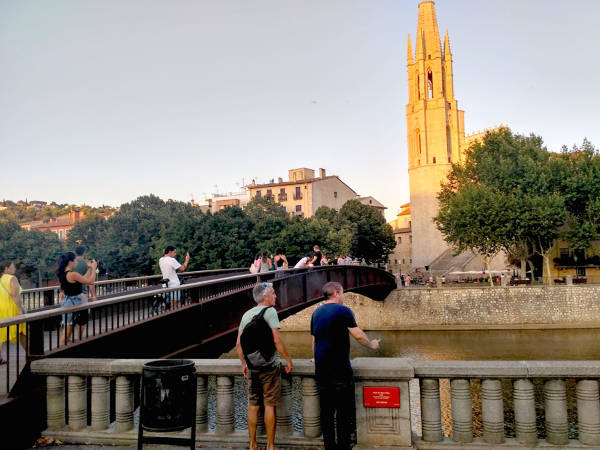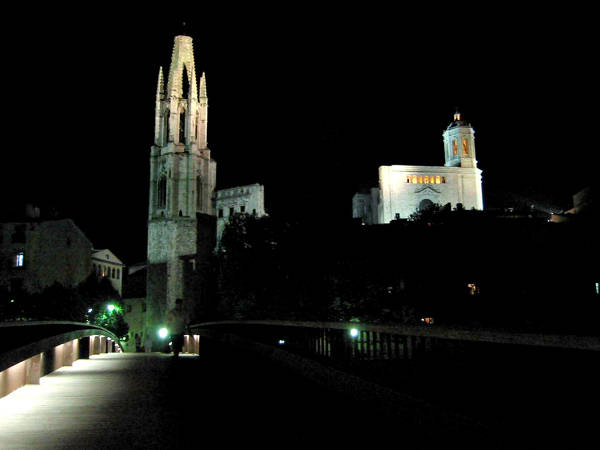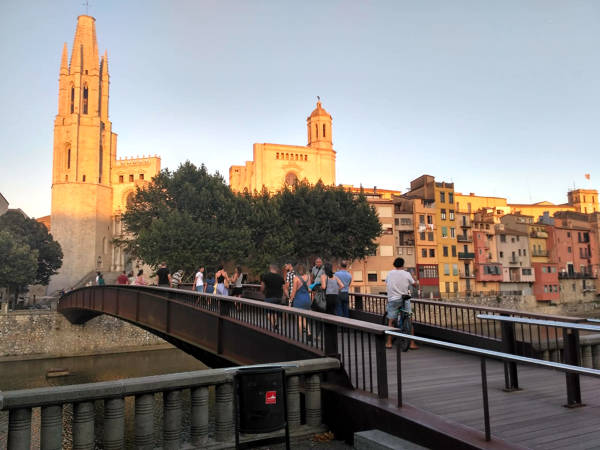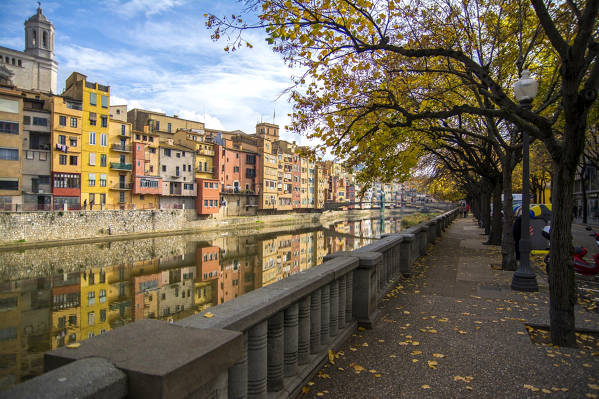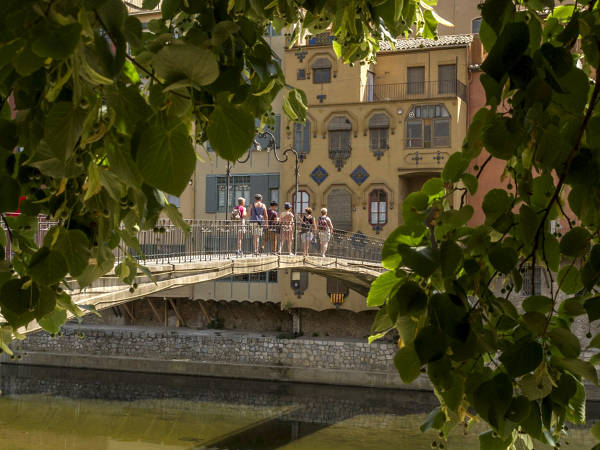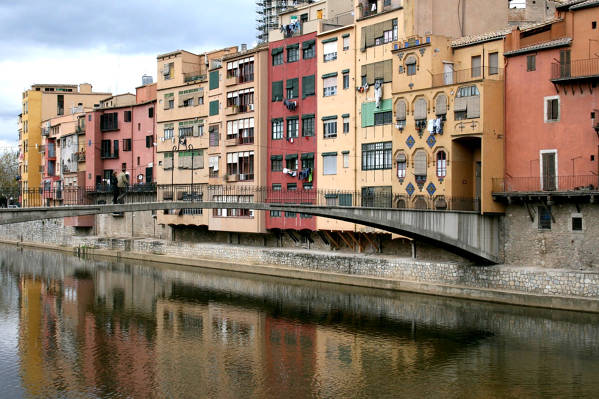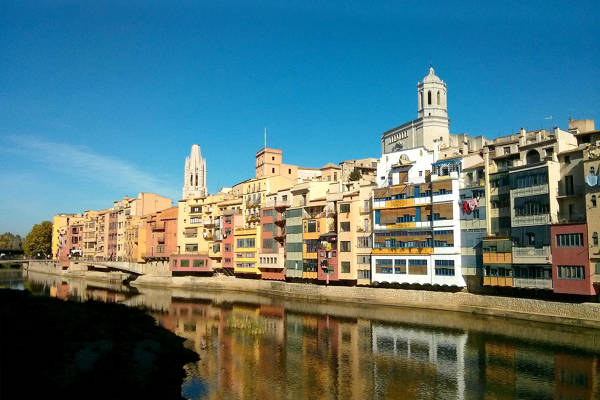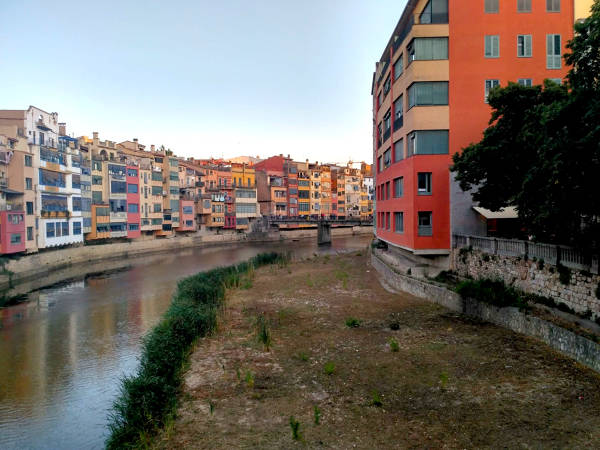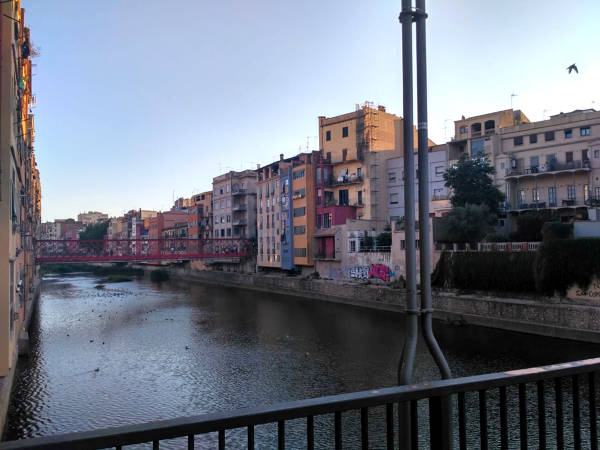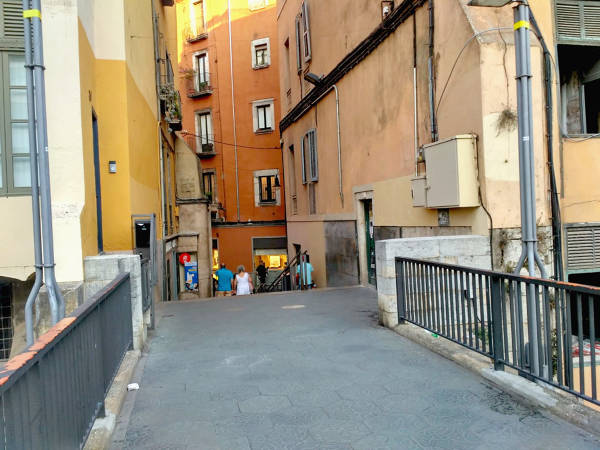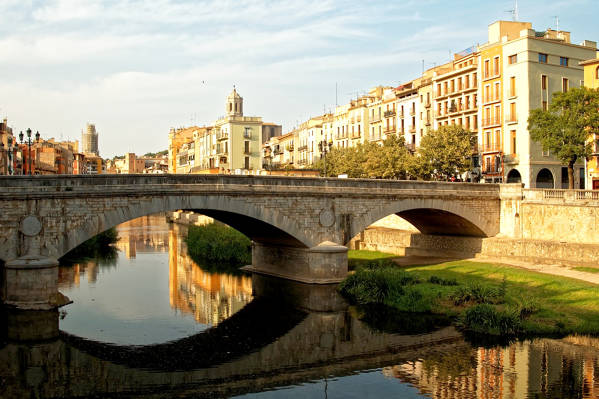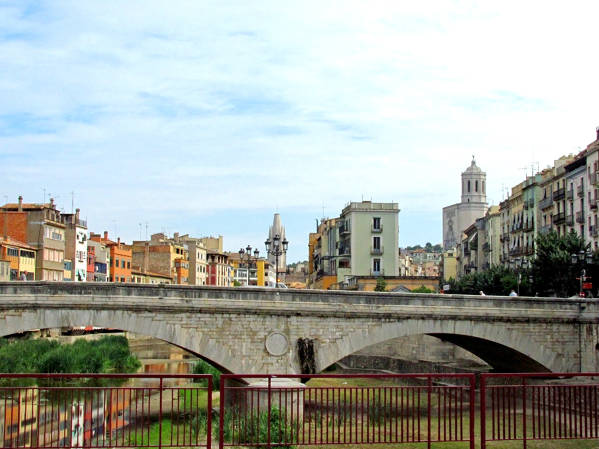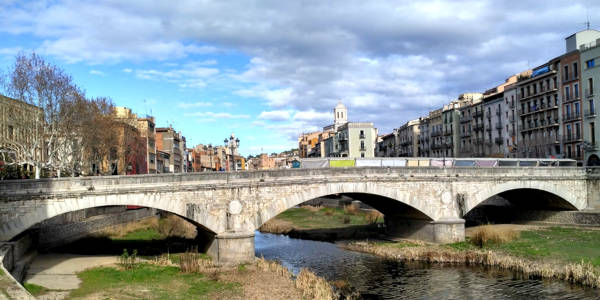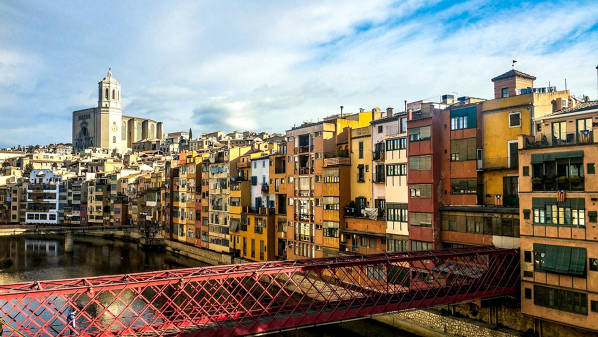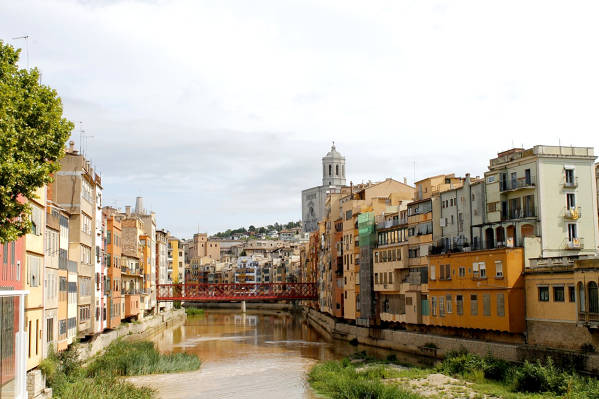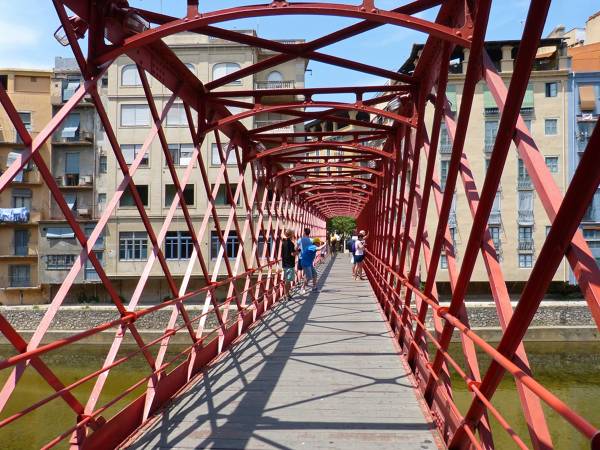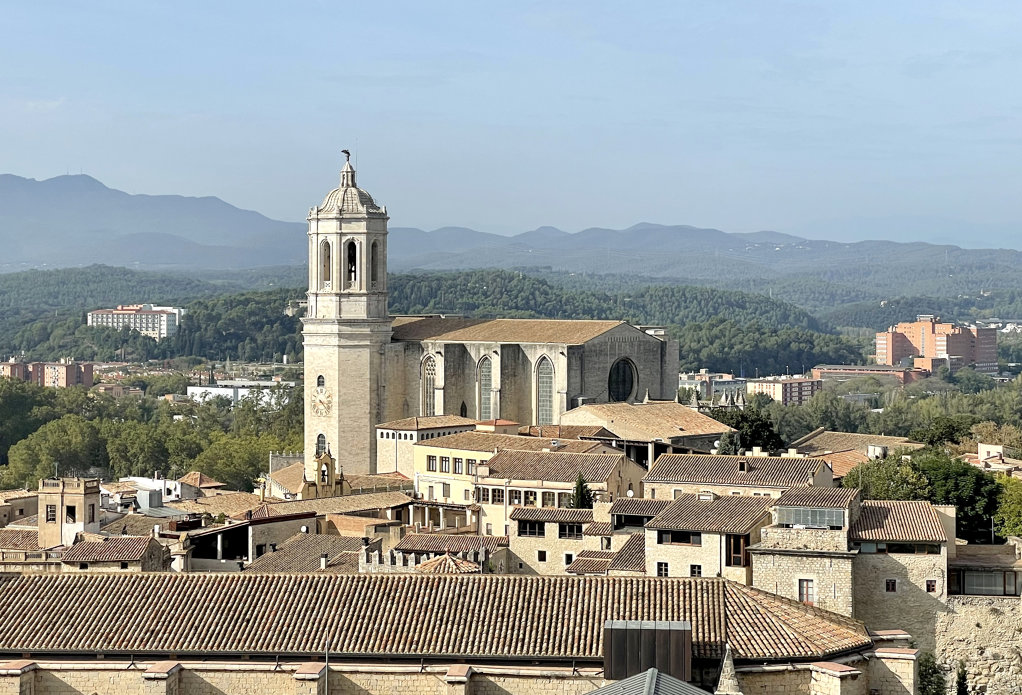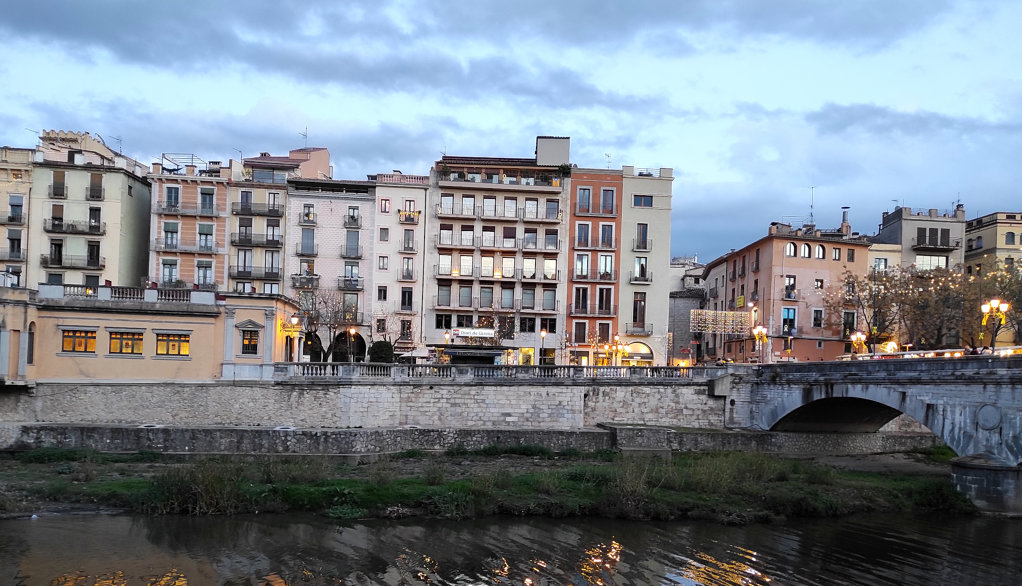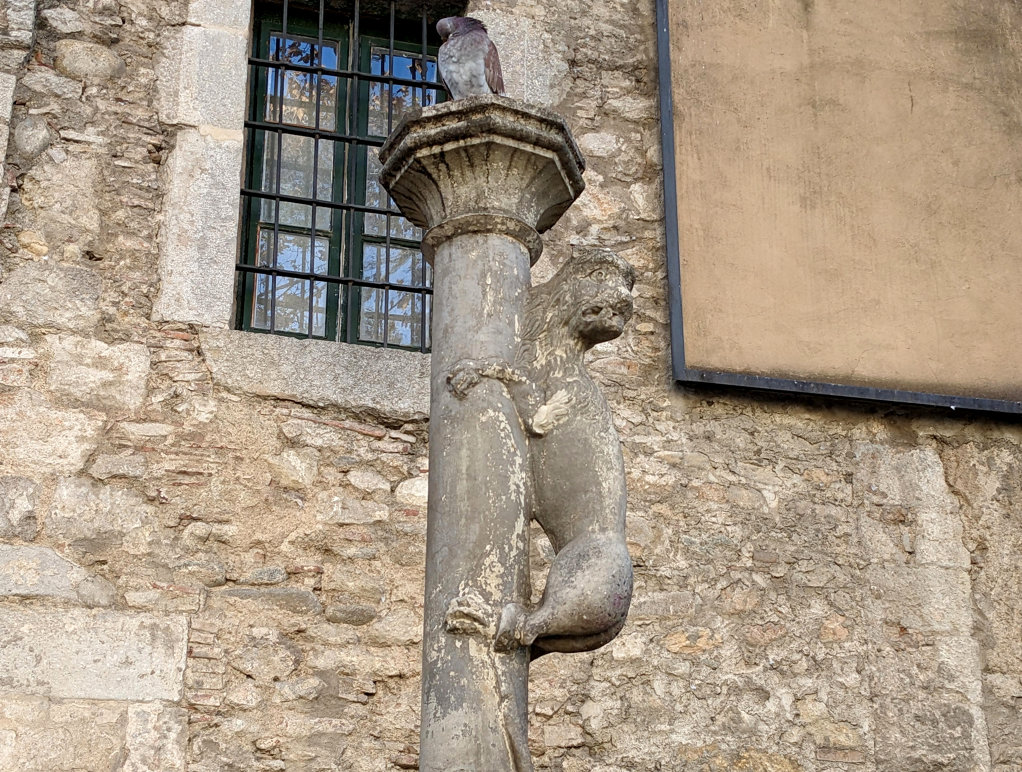
Data sheet
- Distance: 1,5 km
- Childrens: Suitable for children
With the Girona Bridges Route we propose a different and original way to discover the city. This route allows you to visit some of the most outstanding places in Girona in just a few hours or, if you're staying for several days, to get an initial idea of the city and then explore it in greater depth.
Girona's Barri Vell and Mercadal neighbourhoods are separated by the River Onyar. This factor has meant that bridges have historically played a very important role in the communication between the two main axes of the city. These constructions have become an important architectural reference point for the population.
Pont de Sant Feliu
We start our route at the Copa car park, a place from where we will enjoy a spectacular view of the Sant Feliu church, with the Cathedral just behind. At this point we will find the first of the bridges that we will see during our route, the Pont de Sant Feliu. Built in 1995, its architecture already indicates that it is a very modern bridge, and it serves as the gateway to Girona's Barri Vell.
Once you have crossed the Onyar, you will find the Cul de la Lleona on the right-hand side. This is an iconic sculpture which, according to tradition, we must kiss the ass of if we want to return to the city. You'll probably have to queue up - the ass of the Lioness is very busy! After you have completed the ritual - or not - you can enjoy the monumentality of the Church of Sant Feliu for a few minutes, just before heading towards Calderers street, heading the city centre.
Pont d'en Gómez
The narrow and charming Calderers street already gives us a first impression of the architecture and aesthetics of Girona's Barri Vell. At the end of this street, next to a chemist's shop and half hidden by the façades of the houses on the Onyar, is the access to the Pont d'en Gómez. This bridge has much more history than the first one we have found, as it was built in 1916, and owes its name to the owner of the house that had to be partially demolished in order to build this bridge over the Onyar.
The bridge will lead us to José Canalejas street, which will serve as an access route to the spectacular Plaça de la Independencia. This is a space surrounded by neoclassical buildings with porches on the ground floor, where we will find a large number of bars and restaurants with a rich and varied gastronomic offer. The sculpture in the centre of the square is a monument dedicated to the defenders of the city during the sieges of 1808 and 1809.
Pont de Sant Agustí
Continuing our route towards the city centre, under the porches of the square, we will find the access that leads us to the Pont de Sant Agustí. The structure takes its name from the old convent that operated in this area between the 17th and 19th centuries. This bridge has undergone numerous alterations during its history. The structure we see today dates back to 1973.
We will cross the Onyar River for the third time to go and find Argenteria street and La Rambla de la Llibertat, two of the streets that no visitor to the city should miss. This is one of the city's main shopping and tourist centres. Here you will find a large number of small shops, some of them historical, and many small bars and restaurants.
During our walk along the Rambla we will see another bridge on the right. We will pass over this one. We will visit it later!
Pont de Pedra
At the end of La Rambla there's Girona's most monumental bridge. The Pont de Pedra, located a few metres from the historic Hotel Peninsular, dates from 1856 and links the Barri Vell with the Eixample. From here you can enjoy a spectacular and privileged view of the houses of Onyar. It is possible that the most curious and observant visitors will be able to find some fossil surprises among the stones that form the railing of the bridge.
After crossing the Pont de Pedra, on the right hand side you will find Santa Clara street. In this street we will continue in the direction of the Plaça de la Independència, which we have already visited. Santa Clara street is another of the main attractions of the city to enjoy a quiet stroll and visit some of its small shops.
Pont de les Peixateries Velles
When you see the access to the Plaça de la Independència at the end of the street, turn right, because you will have reached what is probably the most photographed and best-known bridge in Girona: Pont de les Peixateries Velles, also known as Pont de Ferro.
This bridge dates from 1877 and was built by the French company Eiffel et Cie, the same company responsible for the famous Eiffel Tower in Paris, which was inaugurated somewhat later, in 1889.
After having crossed the river Onyar for the fifth time, we will be back at La Rambla de la Llibertat.
If you still have time, we recommend that at this point you let yourself get lost in Girona's Barri Vell. Some great options are to continue along the Cort Reial and the Pujada de Sant Domènec, where you'll discover some of the charming corners that have appeared in numerous films, or head towards Carrer de la Força to discover the Jewish Quarter and Girona Cathedral, which also became a film set during the sixth season of Game of Thrones.
